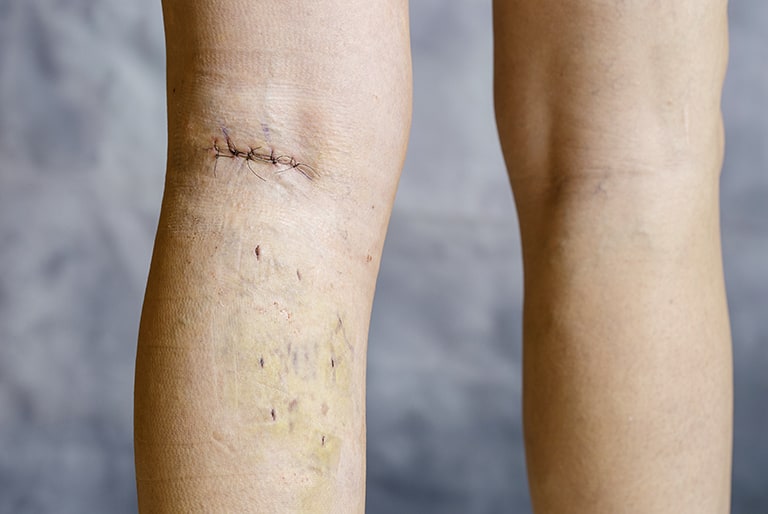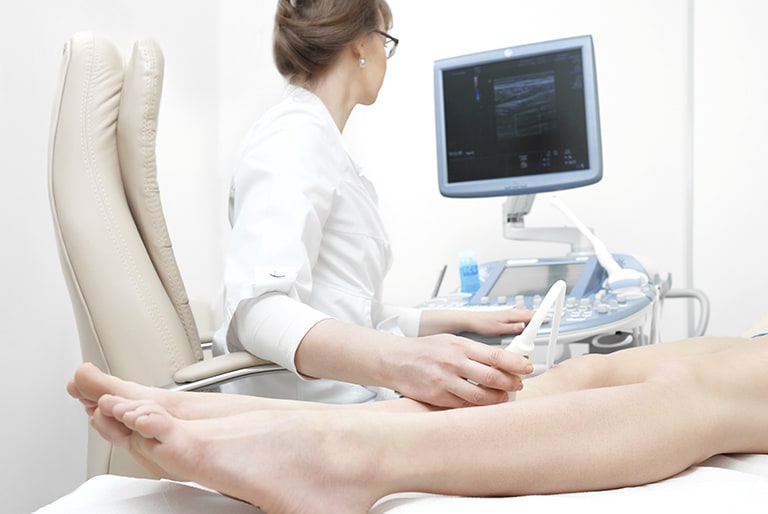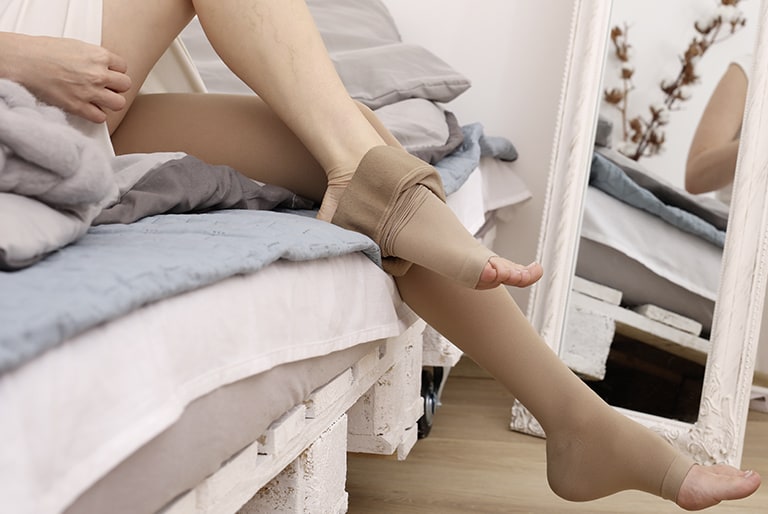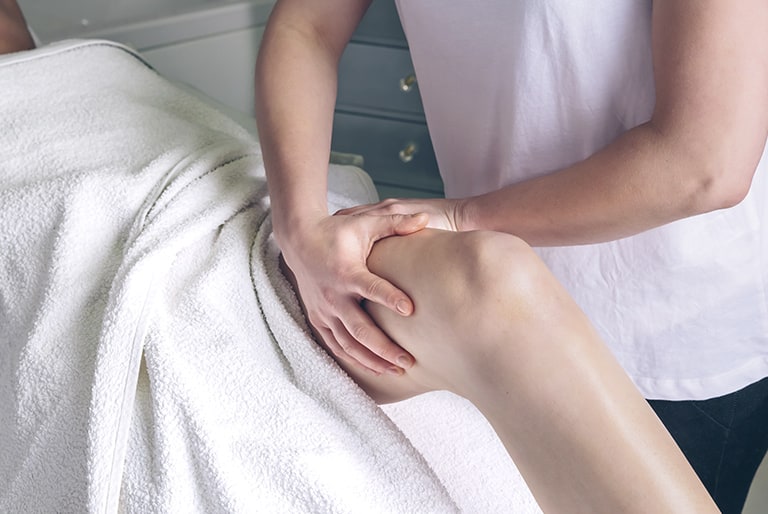Vein stripping
Varicose veins can not only lead to unpleasant symptoms. Most people suffer from the aesthetic aspect: many find the visual appearance of their legs unattractive due to the enlarged veins. That is why many of the afflicted consider having the varicose veins surgically removed. One method is vein stripping.

How does vein stripping work?
The procedure can be traced back to the American doctor William Wayne Babcock (1872-1963). Even nowadays, vein stripping is considered a standard process which involves low complication rates and can usually be done as an outpatient. Today, advancements such as endostripping and cryostripping have rendered the procedure much gentler for patients compared to 20 years ago.But there are alternatives to vein stripping which are less invasive. They include laser therapy, radiofrequency therapy, foam sclerotherapy and the CHIVA method. You should discuss with your phlebologist which method is best for you.
What exactly does the doctor do in vein stripping?
Prior to the operation, the venous system is examined by ultrasonic scan, and sometimes a contrast medium image (phlebography) is required. A local anaesthetic is administered before the incision. Only in serious cases, general anaesthetic is required. In the first step, the vein surgeon exposes the trunk vein at the groin with a small incision. Then he ties off the venous lateral branches and the trunk vein itself. The second step follows below the diseased section, the trunk vein is also tied off at this point. The varicose section of vein is severed. Next, a fine, flexible probe, called the vein stripper, is fed into the vein from below and is affixed at the end of the section of vein. Then the vein is pulled out with the probe. Finally, the incisions are closed and a compression bandage is applied to the leg.
What are the benefits of vein stripping?
The surgical process for removing varicose veins has several benefits:
- The method of treatment is a routine operation and proven by many scientific studies.
- Normally, only a small operation is needed, which can be carried out as an outpatient and with local anaesthetic.
- The costs are covered by all health insurance funds.
As with all medical interventions, stripping can also produce side effects.
What are the risks with vein stripping?
Despite careful, cautious execution it can happen with stripping that, for example, lymphatic vessels, nerve fibres or small lateral branches of the vain get damaged. Possible risks of a stripping operation are:
- Bruises and swelling
- Thrombosis
- Nerve damage
- Infections
- Secondary bleeding
What is important after vein stripping?
Patients can go home after a few hours after an outpatient vein operation. Usually, the bandages are changed the next day and the patients are given compression stockings. The attending doctor decides for how long these should be worn. Normally, the compression stocking has to be worn day and night for the first two weeks after the operation. In the third and fourth week after the operation, it is normally enough to only wear it during the day.
The patient can take a shower after four days, when the wounds from the small incisions have healed. You should wait until the wound has totally closed before taking a bath. Swimming and sauna are taboo for approx. six weeks because of the risk of infection.
The after-effects of the operation, such as bruises, swelling, sensory disturbances, a feeling of pressure in the legs or lymphostasis, usually disappear after a short time. Patients are usually on sick leave for a week after vein stripping, sometimes even longer.
Who is vein stripping suitable for?
Only your doctor can decide if the surgical removal of your varicose veins is right for you. But basically one can say that stripping is primarily suited to patients whose trunk vein is affected by varicosis (varicose veins). Other varicose veins could be too twisted to work with the probe. If there is a heightened risk that the patient will poorly tolerate the operation or the anaesthetic, then minimally invasive methods such as sclerotherapy or lasering the varicose veins are the better option.
When should you have varicose veins pulled?
Early stage varicosis is usually characterised by spider veins and does not cause any problems. If, however, clearly visible varicose veins increasingly develop and larger symptoms occur, you should consider some form of treatment. At least at this stage, better would be sooner, treatment with medication is advisable, for example with Veno SL® 300. The active ingredient Troxerutin improves the fluidity of your blood and supports your vessel walls.
However, if varicose veins remain untreated for many years, the risk of vein thrombosis can increase, which in the worst case can cause pulmonary embolism. In the advanced stage, ulcers can develop on the legs and ankles – and even lead to an open leg.
If you have varicose veins, you should really discuss with your doctor which treatment is best for you, and if your varicose veins need to be removed.


